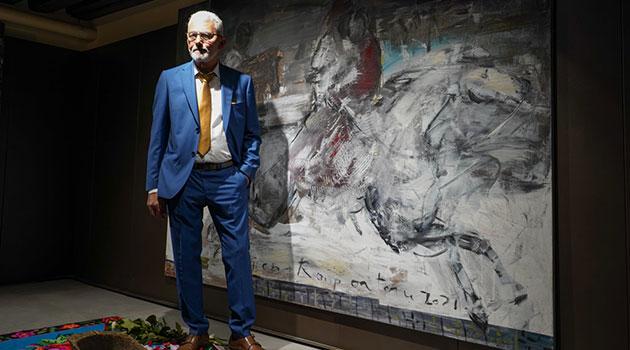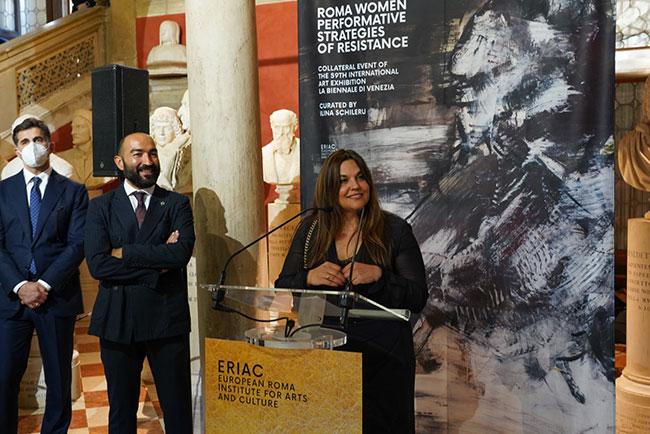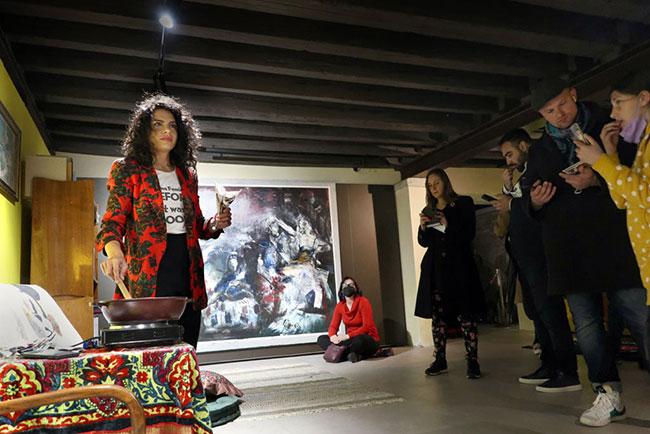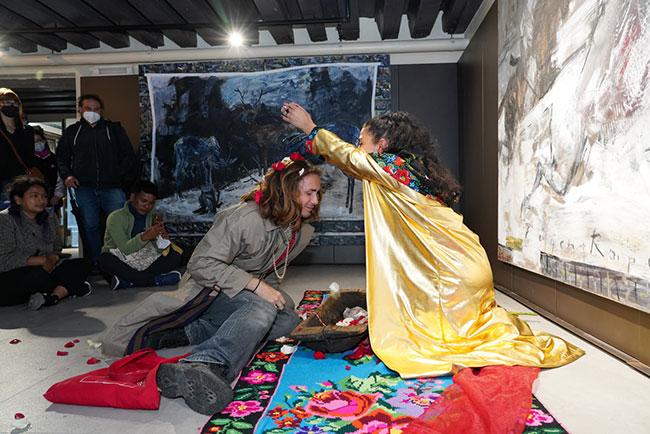Zeljko Jovanovic: This year's success is just the beginning, Romani culture at the Venice Biennale transcends national borders

This year’s Venice Biennale is a great moment for Romani culture. The exhibition of Romani artist Małgorzata Mirgy-Tas in the Polish pavilion is not the only example, either.
In the city center, an exhibition by the renowned Romani painter Eugen Raportoru is also taking place in a palace dating to the 15th century, surrounded by the waters of the Venetian canals. “This year, something extraordinary has happened,” Zejlko Jovanovic, director of the Open Society Foundation’s Roma Initiatives Office and chair of the Board of Directors of the European Roma Institute for Art and Culture (ERIAC) said at the grand opening of the exhibition, who, along with ERIAC Executive Director Timea Junghaus, is one of its commissioners.
“If you believe in it, every effort will manifest results. Our participation in the Biennale is a promise, despite all that is happening now with the war in Ukraine and the threat of nuclear conflict,” Jovanovic said.
According to Junghaus, Romani culture is exceptional precisely because it transcends national borders and calls for multinational participation. However, in the long history of the Biennale since its opening in 1895, this is just the fourth time Romani artists have been given room there.

The first time was in 2007, when an exhibition of contemporary Romani artists called “Paradise Lost” took place at the Biennale. This year’s exhibition entitled “Abduction from Seraiglio” is the result of collaboration between Eugen Raportoru, a 60-year-old male Romanian painter of Roma descent, and activists who are female, Roma, and well-known from the younger generation, such as the award-winning actor, director and screenwriter Alina Serban and the talented, versatile artist and founder of the Giuvlipen Theater Company in Bucharest, Mihaela Dragan.
The entire exhibition is conceived as the interior of Eugen’s childhood home in the 1960s and 1970s, whereby his large-format paintings are his own interpretation of the tapestries that used to be a frequent decoration of household interiors in Romania. Above a double bed with a colorful bedspread hang the tapestries that adorned the painter’s childhood home.
The subject of those tapestries, after Wolfgang Amadeus Mozart’s singspiel, was “The Abduction from the Seraglio”, after which the exhibition is named. Above them is a picture of “The Last Supper” after the original by Leonardo da Vinci.
“An image of ‘The Last Supper’ is quite frequently a component of home decoration in Romania,” says the young curator of the exhibition, Ilina Schileru, who is not Roma herself. “In fact, it was interesting for me to learn how much the Roma homes in Romania resemble the non-Roma ones. People in our country love this picture, and frequently they do not even know who painted it. It is a symbol of faith and togetherness, a dinner where many people come together.”

Most of the exhibition’s equipment and props were said to have been found in flea markets by the artists. These include books, an old turntable, paintings, period furniture, photos and porcelain.
The curator first got to know Raportoru during her studies at Bucharest’s National University of Art. She had just graduated from high school and Eugen was 45 years old when, as an already renowned artist, he decided to add to his artistic education by enrolling there.
After Raporturu approached Shileru to collaborate on this year’s Biennale, their ideas joined forces in an interesting project that challenges viewers to demolish prejudice and transform their mindsets through art and creativity. Dragan and Serban then perform feminist voices in a part of the project that resonates with the topics of this year’s Biennale.
“I agreed with Eugen that we would invite famous women and give them free rein. It’s entirely up to them how they enrich the exhibition,” said the young curator.

Dragan and Serban break down stereotypes through their performances without ever giving up on what makes Romani culture unique. Dragan, dressed in distinctive clothing, speaks her lines in verse.
She walks through the props: Crystal balls for fortune-telling and tarot cards, incense and roses. She speaks about discrimination, the marginalizing and stereotyping of Roma, the sexualization of Romani women.
Dragan invests her verses with her belief that one can change one’s fate, calling for healing and love. She emphasizes the power of women and speaks to them.
“Rise up women, all women rise up,” she recites. In the next room, Alina Serban gives out paper cones full of sunflower seeds to the visitors.
The seeds are a reminder of a story about her parents, one marked by prejudice and racism. “You’re lucky to have a bastard in your belly. Otherwise, I’d jump on you with my boots on,” she quotes a police officer saying harshly to her pregnant mother when she was selling sunflower seeds.
“For me, sunflower seeds mean the community. Safety. Unfortunately, the Romani community is perceived from the outside as uneducated. So I invite you now: Be uneducated with me,” Alina says to the visitors, drawing the audience into her world and offering cones full of seeds as a symbol of solidarity.
“The Abduction from the Seraglio” opened on 22 April, and on that occasion many important figures and journalists met in the entrance hall of the Loredan Palace. Among them were Dijana Pavlovic, an activist and politician living in Rome; Ioanida Costache, a filmmaker, violinist and writer; and the activist and American university professor of Romani origin Ethel Brooks, all of whom then contributed to the exhibition with their own performances.
In his speech, Jovanovic expressed his hope that Romani people will be able to get their own permanent space at the Biennale in the future. “This year we are experiencing an exceptional situation,” he said.
“However, it is necessary to break down this dogma that only people who have their own state can have their own pavilion. We’re not done,” he said.
“This year’s victory is just the beginning,” Jovanovic told the exhibition visitors. Speaking to Romea.cz, artist Eugen Raportoru said: “We have a lot of talents and we have a lot to tell the world through our art. We need to be seen, we need support, and we need people to understand who we are.”
